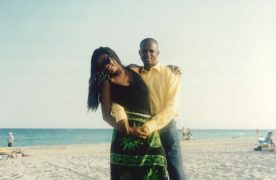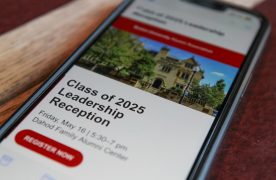With the iconic Boston Marathon now over for 2019, it is time to binge-watch running movies in order to motivate viewers for next year’s race. Here are a couple racing movies that shed some light on the world of running and inspire audiences to put on their sneakers and go out for a run.
“Chariots of Fire” is certainly iconic, most notably for its famous introduction and memorable theme song, which has been parodied for decades. The film tells the story of two young rivals, one Jewish and one Christian, who train to go to the 1924 Olympics and represent Great Britain.
The Jewish racer receives much criticism from his superiors at Cambridge, who look for ways to discriminate against him for his religious beliefs. On the other hand, the Christian racer lacks the support of his family, who believes racing is serving as an obstacle between him and his faith.
The story focuses on each of the men’s personal struggles and inner demons going into the race, with the two competitors proving they are more similar than they think at first glance.
While Lola in “Run Lola Run” is certainly no Olympic athlete, she certainly pulls her weight. In this movie, Lola has to run across Berlin to save her boyfriend after a money delivery goes wrong. The movie runs through three possible scenarios, each one leaving the audience to think about each small act and the many possible effects that could come about from each.
Although this international film is perhaps not as famous as some of the other films on this list, “Run Lola Run” has certainly become a staple foreign movie — being referenced in many TV shows and movies ever since its 1998 release.
While “Forrest Gump” is not a movie exclusively about running, the famous “Run, Forrest! Run!” scene remains a frequently quoted line. First stated by a young Jenny, the scene is key for the iconic protagonist as he realizes the power he gains from running.
After this, Forrest runs across the country for no reason at all for more than three years, all while gaining a hoard of followers and endless media coverage along the way.
Throughout his time, Forrest impacts the lives of those around him. Whether it be by helping them start a T-shirt company, developing a slogan or just giving them hope, the protagonist inspires his fellow runners.
In other instances, some have a very defined motive for running — such as for the high school team depicted in “McFarland, USA.” Set in a town riddled with poverty, being on the cross country team serves as a beacon of hope and opportunity for the runners.
While many of the young boys balance school with supporting their families, their coach sees that he can capitalize on their potential and help them succeed. Through a lot of coaching and support from the entire community, the runners learn about the meaning of sportsmanship, all while proving to be victorious in the sport.
This last movie has got to be about one of the most famous runners of all time — Jesse Owens. In “Race” audiences learn about the cultural impact Owens had as an African American man racing at the Olympics in Nazi Germany.
In a time and place of hatred and discrimination, Owens’ athletic success was not only significant in establishing the United States as a powerful nation, but also in proving that athleticism and talent do not depend on skin color.
Even though Owens faces racism in the United States, he manages to put his own moral dilemma aside to selflessly make a larger, lasting cultural statement.
Evidently, all these movies go beyond running and share a touching story for audiences to learn from. While for many running is only a sport, in other cases it can be a coping mechanism or a way to deal with deeper personal struggles.
Nonetheless, these movies portray important narratives that show the impact running can have on an individual involved in the sport, as well as others around them.
My name is Victoria Lara and I am a sophomore Biomedical Engineering student on the Pre-Medical track. I love watching films and I am passionate about social change. Follow me on Twitter @victoriaa_lara.










